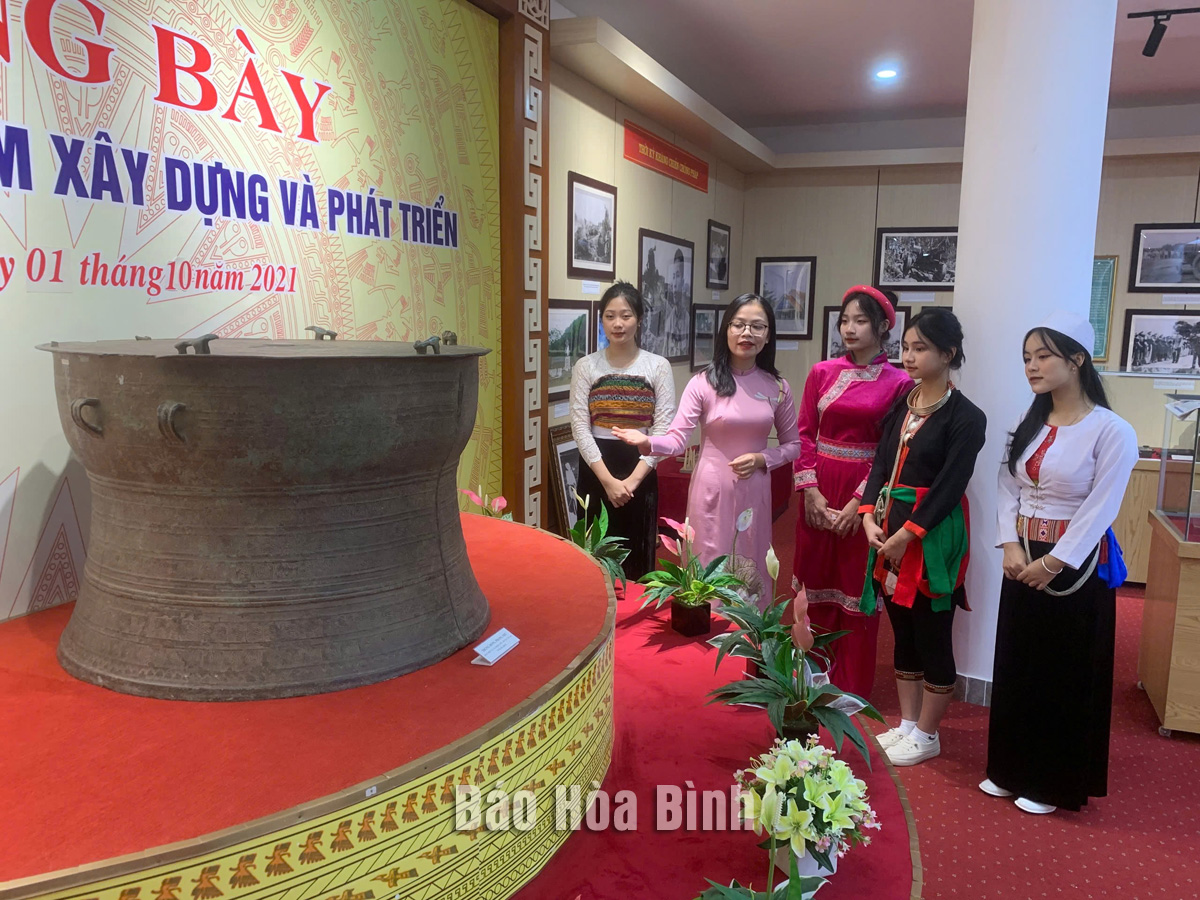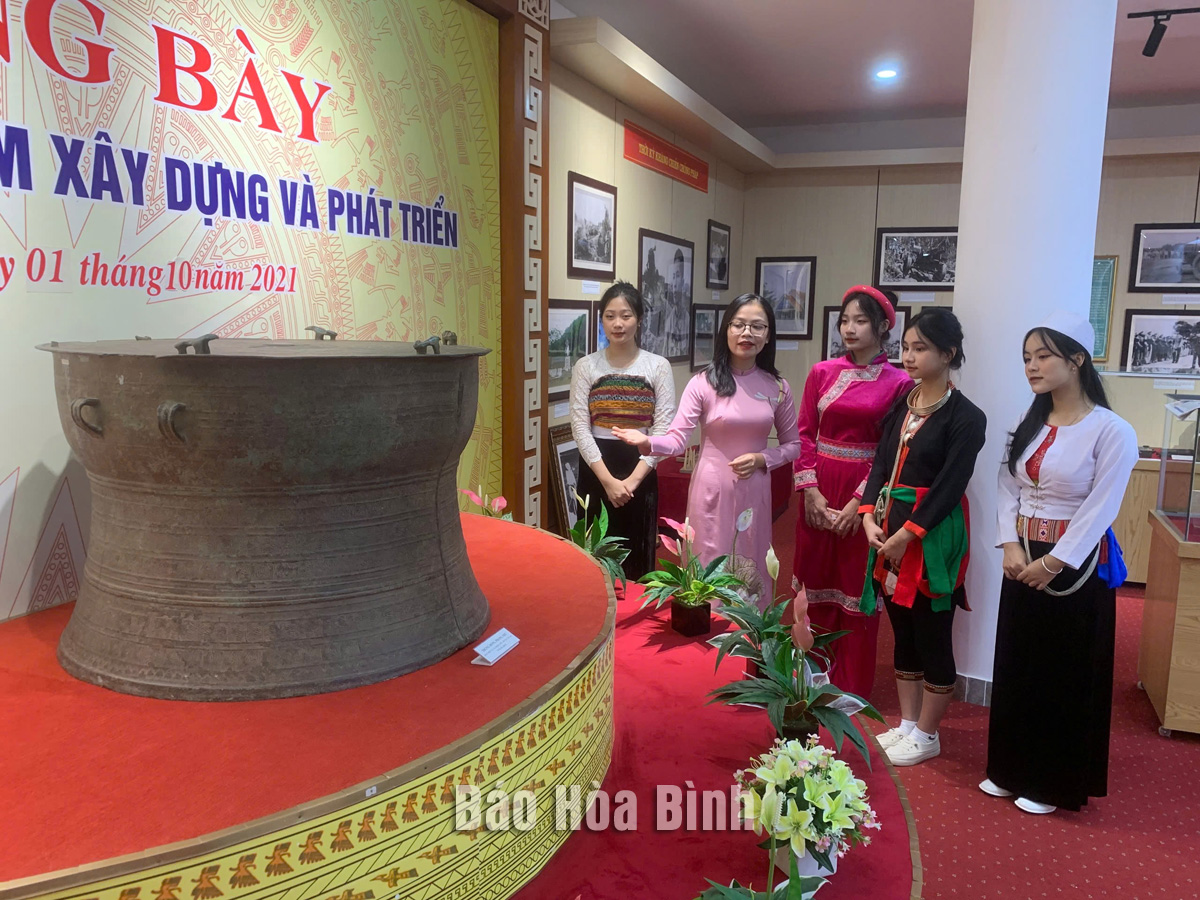



Dong Son drums are preserved and displayed by relevant authorities to meet the public’s interest in learning about them.
Archaeologists have discovered 11 Dong Son drums (Heger I) in the province. Among them, Group A contains Song Da Drum, Doi Ro Drum, and Hoa Binh Drum; Group B contains Yen Bong III Drum and Du Sang Drum; Group C contains Khoan Du, Cho Bo, Lac Long, Yen Bong I, and Yen Bong II; and Group D has Vinh Dong II Drum.
In terms of design, all Dong Son drums feature frog-shaped motifs on their surface. Particularly, on the Khoan Du Drum and Vinh Dong II Drum, new decorative elements have appeared: lozenge patterns on the base. Both of them have a straight back and are relatively large in size, marking the transition in size between traditional drums and the larger ones commonly seen in Heger II. Therefore, it can be said that Dong Son drums evolved with the emergence of Heger II drums discovered in Hoa Binh.
In 1958, the Vietnam Museum of History (formerly the Vietnam National History Museum) collected a Dong Son drum from the home of Dinh Cong Minh in Hoa Binh province. This drum has a relatively low shape, with a rim larger than the surface. The back no longer maintains the original upright cylindrical form, but instead tapers near the base.
The drum's surface depicts the daily life of the local people, including their homes (stilt houses), daily activities (rice pounding, hunting), and cultural life (dancing, boat racing).
There are 59 Heger II drums found in Hoa Binh, primarily in areas inhabited by the Muong people. These drums exhibit distinctive features consistent with those found across Vietnam.
This type of drum has long been associated with the Muong people. Their original function as mythological symbols in rituals for rain and harvest, related to agricultural practices, has faded away. When the role of Dong Son drums came to an end, the Heger II drums were still highly regarded and preserved by the Muong people. They are a symbol of the enduring spirit of Dong Son Culture and have been deeply intertwined with the lives of the Muong. The Muong region directly inherited the traditions of the Dong Son drums, making the Heger II drum a cultural emblem of the Muong people and a symbol of their distinct cultural identity.
The presence of Heger II drums in the Muong people's settlement area for nearly two millennia serves as a powerful testament to the Dong Son tradition, representing the continuation and creative evolution of ancient Vietnamese civilization. Given these meanings, this type of drum can be referred to as the "Muong drum."
Today, in the broader context of the bronze drum culture, for many communities, the bronze drum has largely become a beautiful relic of the past. However, in the Muong region, the role of the bronze drum remains undiminished. Its sound still resonates in the cultural life of the Muong people, particularly in festivals, and even in funerals.